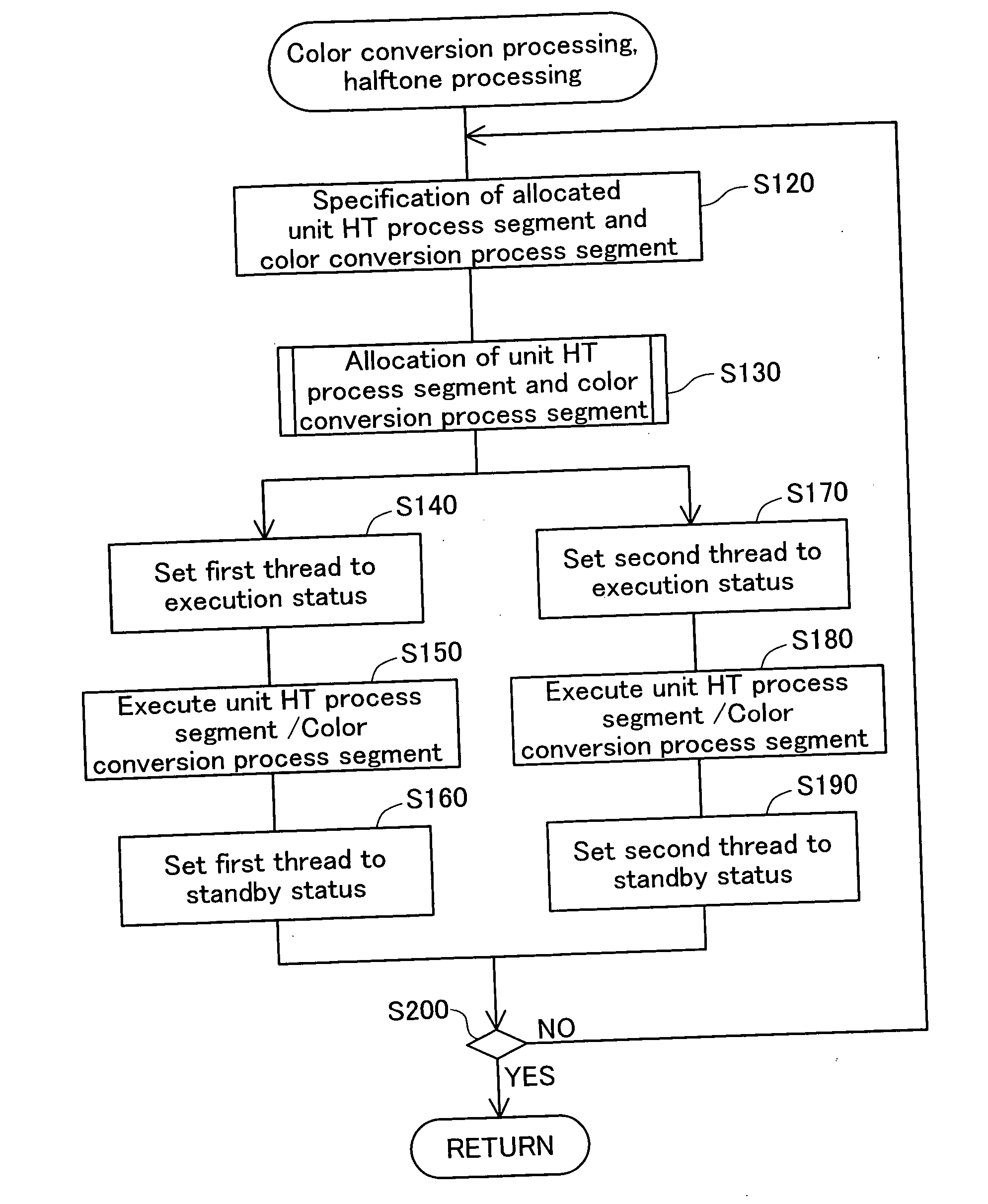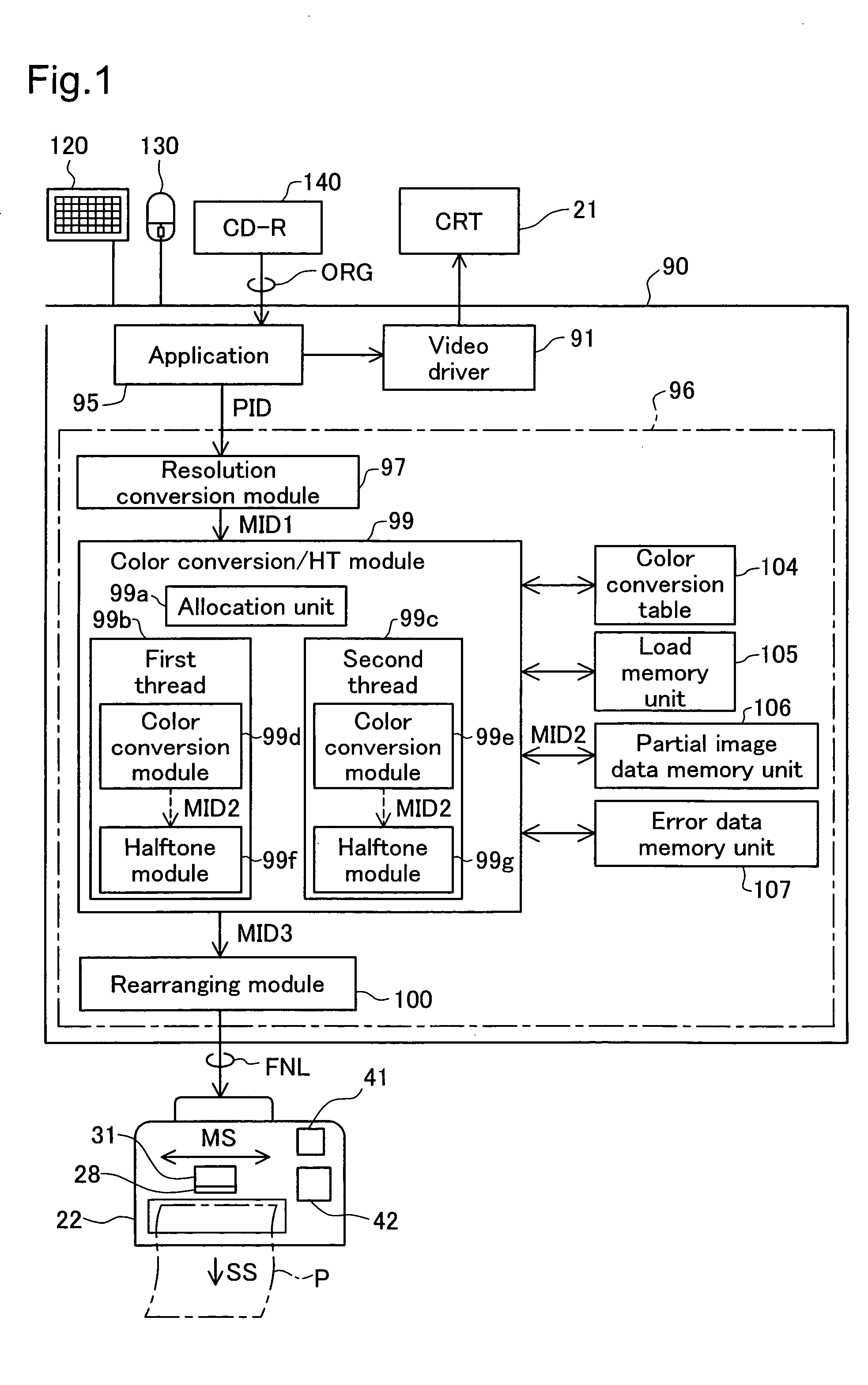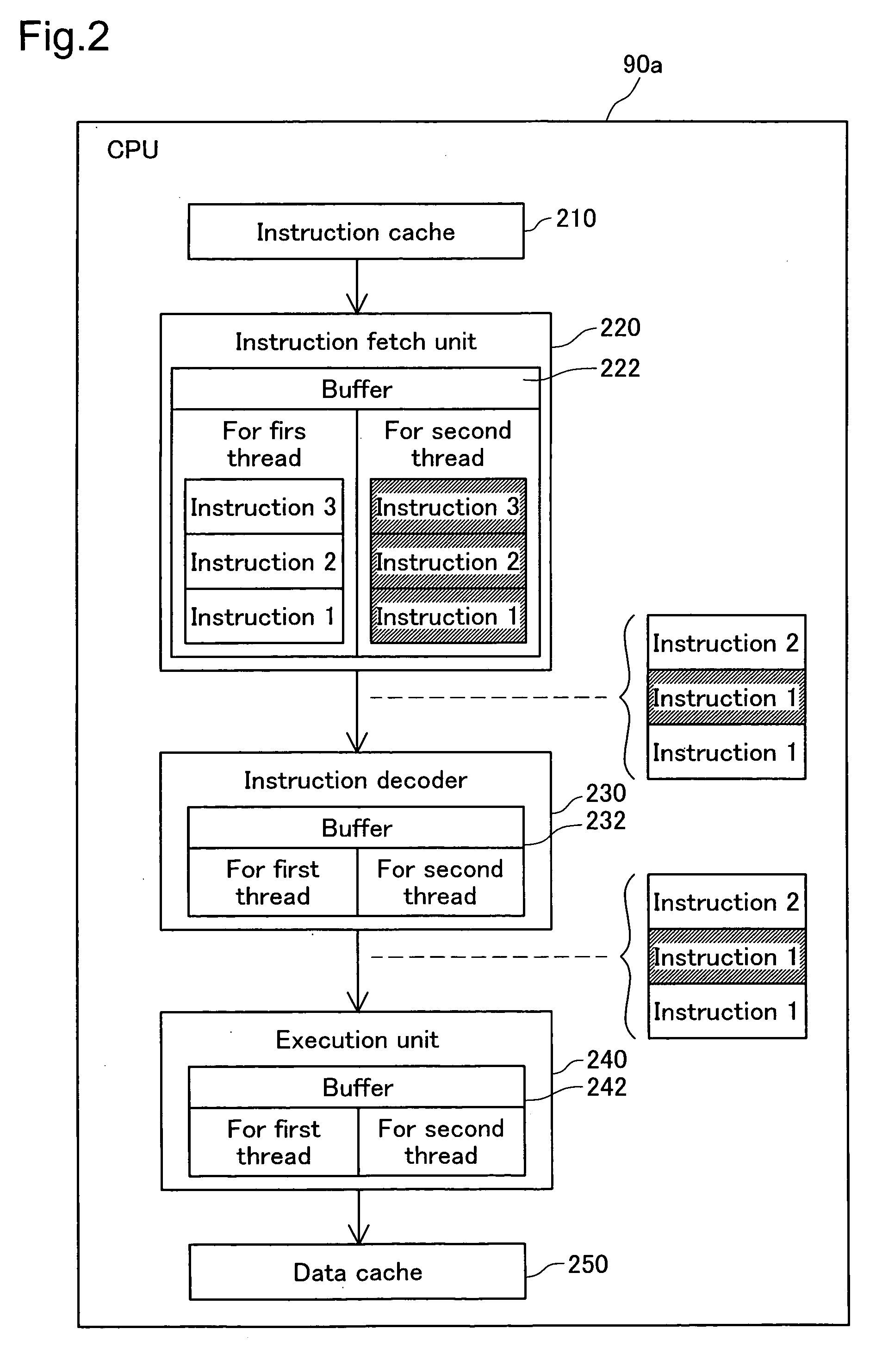Load allocation when executing image processing using parallel processing
a technology of parallel processing and load allocation, applied in the direction of digitally marking record carriers, multi-programming arrangements, instruments, etc., can solve the problem of not considering the efficiency of parallel processing execution, and achieve the effect of reducing wait time, efficient execution, and high degree of equalization of loads
- Summary
- Abstract
- Description
- Claims
- Application Information
AI Technical Summary
Benefits of technology
Problems solved by technology
Method used
Image
Examples
second embodiment
C. Second Embodiment
[0096] With the second embodiment, the timing of the execution of processes allocated to each thread differs from that of the first embodiment. The other points are the same as the first embodiment.
[0097]FIG. 9 is a Gantt chart showing the method of execution of processes allocated to the first and the second threads in the second embodiment, i.e. the i-th to the (i+2)-th unit HT process segments and the (i+1)-th to the (i+3)-th color conversion process segments. The notations are the same as those in FIG. 8. The comparison example Gc1 shown in the lower level of FIG. 9 is the same as that shown in the lower level of FIG. 8. With the first embodiment, process segment allocated to the threads simultaneously at step 130 in FIG. 3 such as Cc (i+2), C (i+1), M (i+1), Y (i+1), and K (i+1), for example, are executed after waiting for the completion of all the process- segments Cc (i+1), C (i), M (i), Y (i), and K (i) allocated immediately prior at step 130 (see the br...
third embodiment
D. Third Embodiment
[0103] With the third embodiment, while actually executing the color conversion process segment or the unit HT process segment, the next unit HT process segment to be executed is determined. The third embodiment is the same as the first embodiment except for the allocation and execution method of the color conversion process segments and the unit HT process segments to the threads.
[0104]FIG. 10 is a flow chart showing the specific process flow of the color conversion process and the halftone process with the third embodiment. With the third embodiment, instead of the method of FIG. 3 for the first embodiment, the color conversion process segments and the unit HT process segments are allocated and executed to the threads using the method shown in FIG. 10.
[0105] At step S125 of FIG. 10, the color conversion process segments and the unit HT process segments that can be allocated to the threads are specified. The “color conversion process segments and the unit HT pr...
modification 1
E1. Modification 1
[0119] With the first embodiment, the process segments allocated at steps S120 and S130 were the halftone processes of each ink color of the subject raster lines LLs (i) and the color conversion process of the next raster lines LLs (i+1) of the subject raster lines LLs (i) (see step S120 of FIG. 3). Also, with the third embodiment, the processes selected as allocatable processes at step S125 were the process segmenmts among the unit HT process segments of the i-th to the (i+1)-th partial images that satisfy specified conditions and the color conversion process segments of the (i+1)-th to the (i+2)-th partial images. However, it is also possible to include other process segments for the process segments subject to allocation. For example,.it is possible to include the color conversion process segments of the (i+3)-th to the (i+4)-th partial images. It is also possible to include process segments among the unit HT process segments of the (i+2)-th or the (i+3)-th part...
PUM
 Login to View More
Login to View More Abstract
Description
Claims
Application Information
 Login to View More
Login to View More - R&D
- Intellectual Property
- Life Sciences
- Materials
- Tech Scout
- Unparalleled Data Quality
- Higher Quality Content
- 60% Fewer Hallucinations
Browse by: Latest US Patents, China's latest patents, Technical Efficacy Thesaurus, Application Domain, Technology Topic, Popular Technical Reports.
© 2025 PatSnap. All rights reserved.Legal|Privacy policy|Modern Slavery Act Transparency Statement|Sitemap|About US| Contact US: help@patsnap.com



